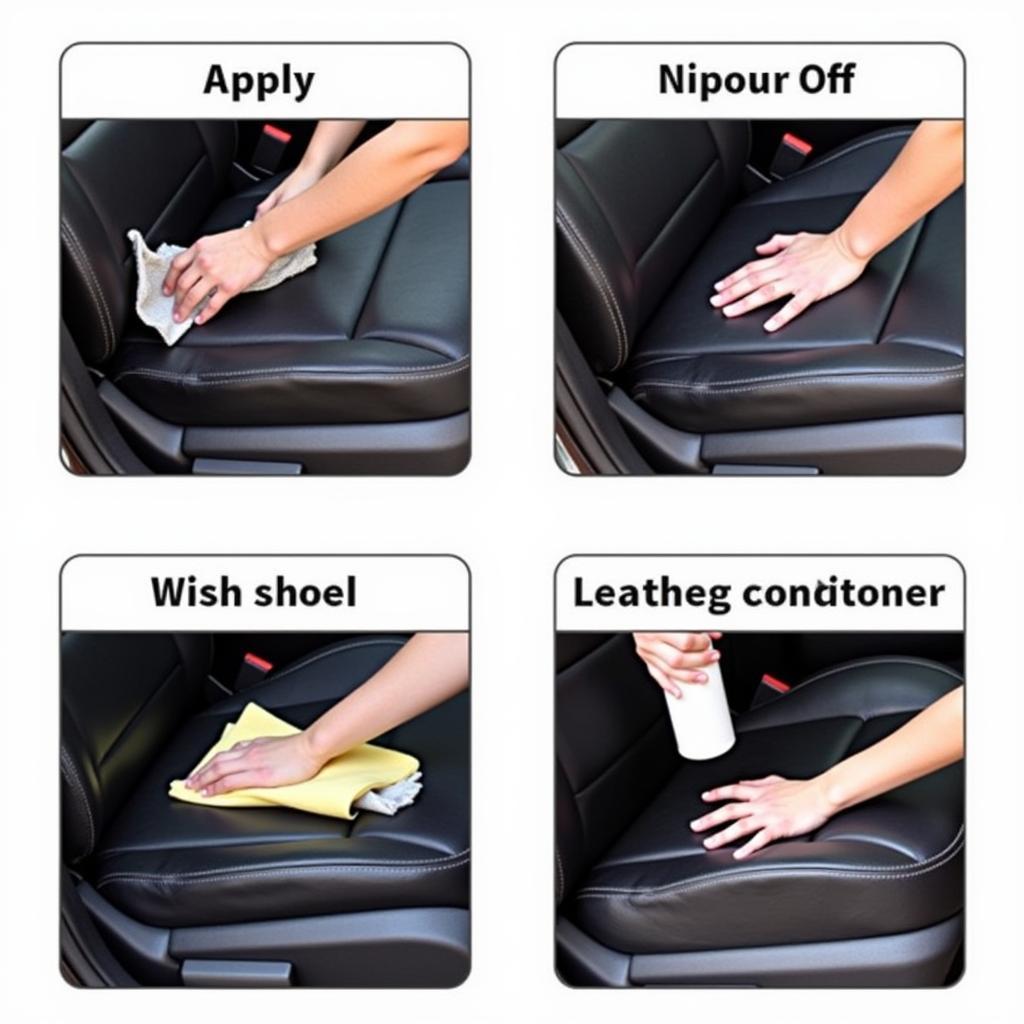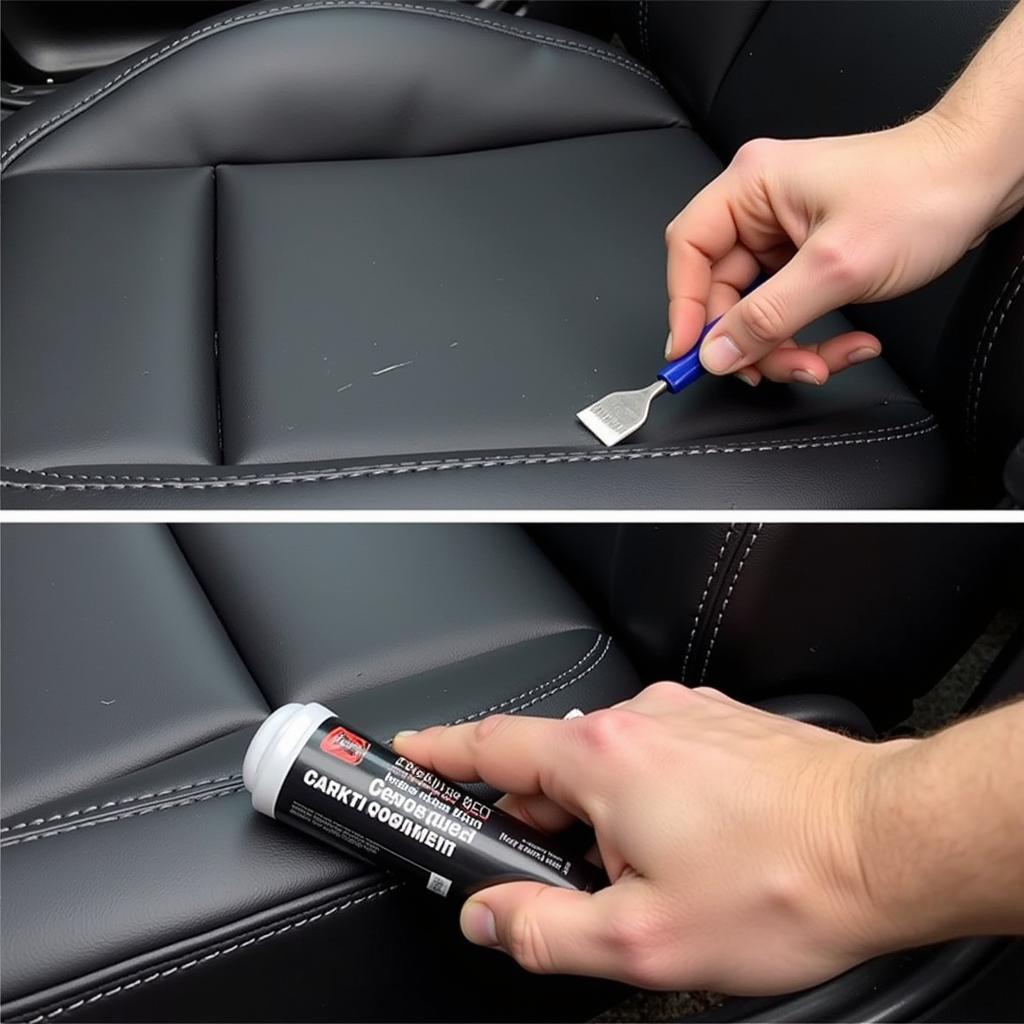Leather car seats, while luxurious and durable, can show their age with wear and tear. Knowing How To Fix Old Leather Car Seats can save you money and maintain the aesthetic appeal of your vehicle’s interior. This guide offers comprehensive solutions for restoring your leather car seats to their former glory.
After regular use, leather car seats can develop cracks, fades, and even tears. Luckily, with the right tools and techniques, you can revitalize them yourself. Check out our guide on fixing faded car seats for some additional tips.
Assessing the Damage: A Crucial First Step
Before diving into the restoration process, thoroughly assess the condition of your leather seats. Identify the type of damage: cracks, scratches, fading, stains, or tears. The extent of the damage will dictate the appropriate repair method. For example, a small surface scratch will require a different approach than a deep tear or widespread cracking.
This initial assessment will also help you gather the necessary materials and tools. Everything from cleaning solutions and conditioners to patching kits and specialized dyes might be required.
Cleaning and Conditioning: The Foundation of Leather Care
Regular cleaning and conditioning are essential for maintaining the health and appearance of leather car seats. Use a pH-neutral leather cleaner to remove dirt and grime. Avoid harsh chemicals that can strip the leather of its natural oils.
After cleaning, apply a high-quality leather conditioner to moisturize and protect the leather. This helps prevent cracking and fading. Learn how to fix a burn mark in car seat for more targeted repair advice.
 Applying leather cleaner and conditioner to car seats
Applying leather cleaner and conditioner to car seats
Repairing Cracks and Scratches: Restoring the Surface
Minor cracks and scratches can often be repaired using leather filler or repair compounds. These products fill in the damaged areas and restore a smooth surface. After application, allow the compound to dry and then sand it down for a seamless finish. You might want to know how much to fix leather seat in car to budget accordingly.
For deeper cracks, a leather patching kit may be necessary. These kits typically include patches, adhesive, and color-matching dyes. Carefully follow the instructions provided with the kit to achieve the best results.
Addressing Fading and Discoloration: Reviving the Color
Faded or discolored leather can be revitalized with leather dye or recoloring balm. Choose a product that closely matches the original color of your seats. Apply the dye or balm evenly, following the manufacturer’s instructions. This can dramatically improve the overall appearance of your car seats. Fixing uncomfortable car seats can also significantly improve your driving experience.
 Using leather repair compound on a scratched car seat
Using leather repair compound on a scratched car seat
Dealing with Tears and Holes: Advanced Repair Techniques
Repairing tears and holes requires a more advanced approach. Smaller tears can often be repaired using a leather repair kit. Larger tears or holes may require professional upholstery repair. You can learn how to fix a hole in your leather car seat with our dedicated guide.
Conclusion: Maintaining Your Leather Investment
Knowing how to fix old leather car seats is an invaluable skill for any car owner. By following these steps, you can restore your leather seats to their former glory and extend their lifespan. Regular cleaning, conditioning, and addressing damage promptly will keep your leather looking its best for years to come. For any further assistance or inquiries, connect with us at AutoTipPro. Our phone number is +1 (641) 206-8880 and our office is located at 500 N St Mary’s St, San Antonio, TX 78205, United States.





Leave a Reply